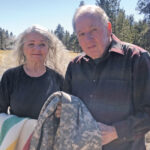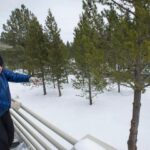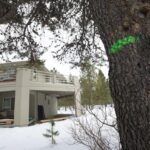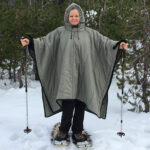Taken from The Spokesman Review
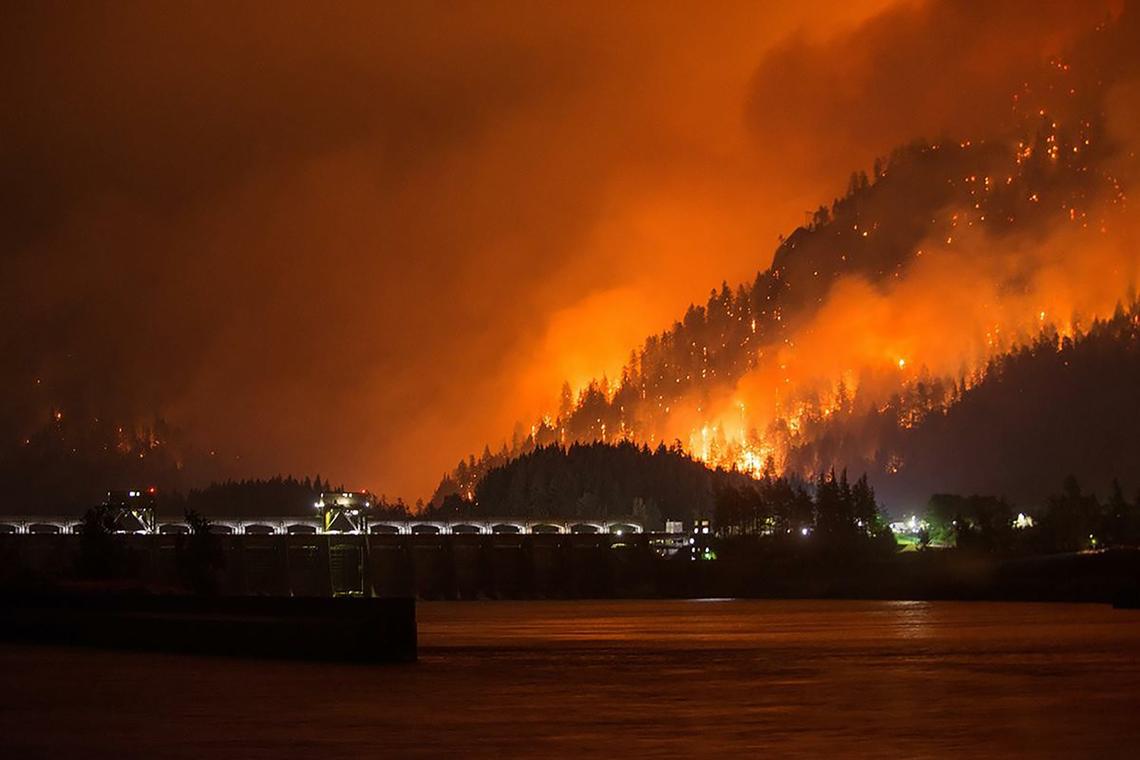
A Spokane family heard the bang about 4 p.m. that transformed their refreshing Saturday hike past waterfalls in the Columbia River Gorge National Scenic Area into a harrowing overnight ordeal.
“We thought it was a rifle shot, but we later learned it was fireworks,” Merribeth Midtlyng said.
Minutes later, as the family snapped photos of Punchbowl Falls and waded in the cool pool, other hikers came scurrying back. Word quickly spread that the easy 1.9-mile Eagle Creek Trail they’d trekked to access the falls was blocked by fire.
The flames, fueled by dry mosses in the seemingly lush environment, spread quickly.
More than 140 hikers found themselves cut off from an easy escape. Another fire was blocking a potential escape route a few miles away.
Midtlyng, her husband, David, their three adult children and two friends had to make stressful choices.
A mapping application, called Gaia, on his cellphone enabled David to look at the trails and peg their location. The only reasonable escape route was 14-18 miles away, and it was going to be dark soon.
“We’re grateful our family is strong and healthy, but some people were not,” Midtlyng said Tuesday from her home in Spokane. “We all decided to stay as a group.
“One woman was able to climb up and get a cellphone signal and contact the sheriff while an Air Force medic named Rob, who apparently had hiked into Punchbowl on a first date, stepped up and prevented panic,” she said.
At 5:30 p.m., firefighters in a helicopter dropped a message on a yellow ribbon giving the group directions to walk out toward a trail that was already closed because of the Indian Creek fire.
Flames from the new Eagle Creek fire had approached to within 300 yards as they moved out.
“(Rob) got everybody headed in the right direction,” Mydtlyng said. “He’d walk up and down the line of people on the trail, give a good vibe and help people who needed assistance.”
The trained medic had everyone count off. Strong hikers were spotted at the beginning and end of the line of evacuees. When somebody needed assistance, everyone stopped.
A U.S. Forest Service employee, Sharon Steriti, met the group at about 10 p.m. after hiking in 11 miles from where she’d been stationed. Steriti, a climbing ranger at nearby Mount St. Helens, had been called in to reroute Pacific Crest Trail hikers.
“When I heard on the radio that a Forest Service crew was blocked by fire from reaching 143 people, I volunteered to go contact them from my position,” Steriti said Tuesday.
“Sharon had a radio and we could hear the bad news that no helicopter was going to be able to fly in supplies,” Midtlyng said.
The group found great comfort in having a uniformed ranger on the scene communicating with fire spotters in National Guard helicopters overhead, Midtlyng said. “She was professional and diplomatic with people who were very anxious and frustrated. She was an angel.
“Some of the trail runners and hikers were in wet clothes because they’d come in on a hot day to be refreshed at the waterfall. Some girls were in bathing suits.
“I’ll never again set out on a trail without a few essential things in a pack,” Midtlyng digressed during the interview. “I’m heading out to the store to buy a few supplies today. I learned my lesson.”
The hard way.
Without headlamps, many of the hikers used cell phones to help illuminate the trail as they crossed creeks and bridges and traversed precipitous slopes.
The only hiker near the Midtlyng group who was equipped for being on the trail overnight was a young woman from Washington, D.C., who’d trekked the short trail to the falls with day pack loaded with essentials.
“She was an Asian gal named Emily, just six years in the country, and she’d read the book ‘Wild’ and knew all the things to bring on a hike,” Midtlyng said. “She had a headlamp, food, shelter and water purifier and was so helpful to a lot of people, helping them get safe water to drink.”
Glowing embers were soaring overhead as they hiked, at one point igniting small fires near them. “One young man filled bottles from the creek and doused the flames,” Midtlyng said. “We couldn’t see him in the darkness but we could hear him beating out the embers with a log.”
At one point, they could see flames bursting on the hillside across a ravine from where they’d come. “We just made it,” Midtlyng said.
A helicopter flew over, buoying their hopes for supplies, but they learned it was picking up a family with small children from a different trail.
Midtlyng, who suffers from fear of heights, was terrified as they walked over slippery rocks along sheer cliffs. David had made a misstep at a break in the action and fell a short way to a ledge. “If he’d have been in (a) slightly different place, it would have been the end,” she said.
In the dark on the bridge at Tunnel Falls, she could hear the water thundering into nothingness below her. Her left hand clamped onto the safety cable like vise grips as she forced her next steps. “I’d like to say I called out like Tarzan, but it was definitely the cry of Jane!” she said.
Not until she got past the falls could she relax a bit, looking back to see the lights of hikers moving through the darkness.
Steriti picked the Tunnel Falls area as a safe place to spend the rest of the night rather than risk injuries going farther in darkness.
The Midtlyng group cuddled for warmth and tried to rest. “We could sleep maybe five minutes at a shot, but really you couldn’t,” Midtlyng said. “I woke with my daughter’s bare foot on my head. Normally I’d have been annoyed, but I said, ‘It’s warm; keep it there.’
“Some people were trembling. We were all cold on the ground. We all have bruises on our hips and bodies from the rocks.
“A bear actually came into our area and no one stirred,” Midtlying said. “After all we’d been through, it seemed irrelevant to our circumstances. We had no food and we were just a bunch of smelly, tired humans!”
At 3 a.m., a group of firefighters hiked in with water, snacks and supplies. One Mylar blanket wrapped around two or three people huddled together made all the difference in the world, she said.
In a count-off, a pen was used to write a corresponding number on everyone’s hand.
As light finally began to gather in the sky after 5:30 a.m. on Sunday, the responders rousted the 143 hikers and they started marching another 11 miles to where buses would be waiting.
“Although this would normally be a breathtaking hike, knowing you’re going between two fires keeps you moving quickly,” Midtlyng said. “Throughout the morning we were grateful to be met by firefighters and volunteers handing out water, Gatorade and small amounts of food, as well as clearing logs from trails where they could.”
Nearing the end, the group went through a final count-off as responders checked the numbers on their hands.
“We had come a very long way over the course of a distressing 24 hours, and we all had one last climb, another 350 feet, literally 35 flights of log stairs to meet the school buses taking us back to our cars, “ Midtlyng said.
“Never again will I go out without a little pack on me with essentials. You never know what’s going to happen.”

